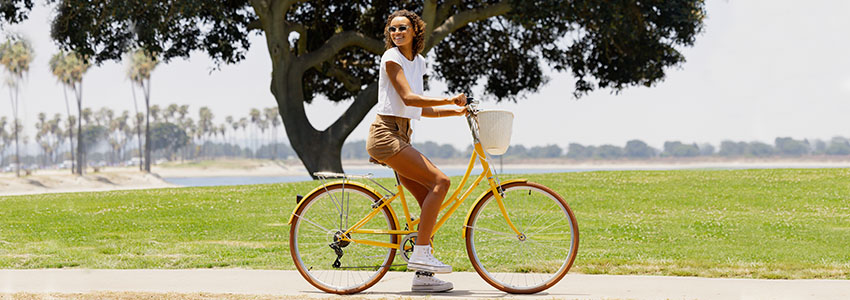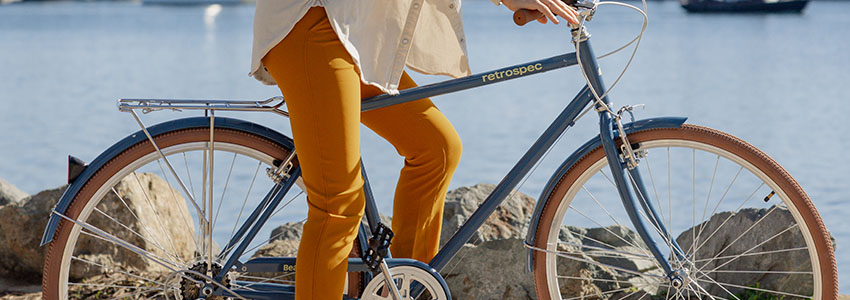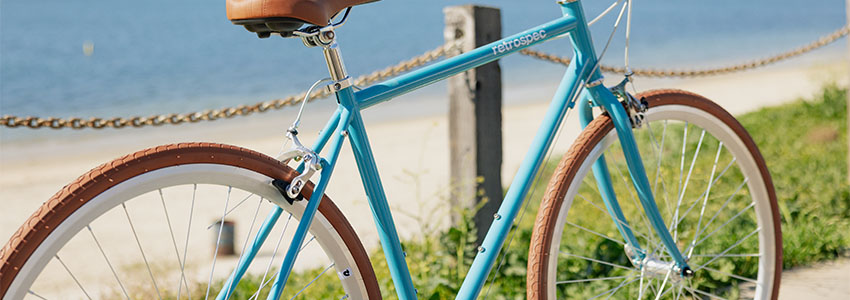City Bikes: The Ultimate Buyer's Guide

Are you interested in purchasing a city bicycle to ride around town? Have you been looking at bicycles for city riding but don't know which frame style or size would fit your needs?
Some who are considering buying a city bike just want an easy, low-maintenance ride around town. Others living in a congested area may need a utility bike that’s built to handle city pavement and sidewalks.
If you're just starting your search, we’ve got you covered. In this article, we’ll walk you through everything you need to know about how to buy a city bike in today's market.
Finding the Right City Bicycle for Sale
When starting your journey in the bicycle market, there are certain questions you need to ask yourself.
Where will you be riding your bike?
How often will you be riding and at what distance?
What’s more important to your ride? Comfort or speed?
Do you prefer the latest technology, or do you prefer a bike with a minimal, no-frills design?
Making the Right Choice for Your Needs
Once you determine the answer to each of these questions, you'll be able to find a city bike that matches the type of riding you want to do.
Some people are looking to commute from one destination to another. Others want to be able to ride through city bike lanes during the weekend, often traveling 20 miles or more. Some bike owners plan to ride in the rain.
For most people who are interested in riding longer distances, comfort and quality will be more important. If you're hoping to get in shape, a hybrid bicycle may be your best bet. If you’re looking for bikes that are reliable daily commuters, a standard city bike will quickly become your go-to.

Tires
There are many different types of tires available for bicycles.
City bikes, like Retrospec’s Beaumont, sport thinner, lightweight 700 c tires to support higher speeds and give you higher acceleration than fatter tires. You can get tires like these with a variety of different widths and tread patterns.
The commuter tires found on city bikes grip the pavement and dispel water on wet roads. Many city bikes also come with fenders that protect you from getting splashed when riding in the rain.
A hybrid bike will usually come with thicker, grippier tires than a standard city bike. A 26-inch tire with a fairly sturdy rim is similar to tires found on mountain bikes. The advantage of these tires is that their wider surface area and grippy texture can handle bumps and rough terrain that can throw you out of the seat. You can also put knobby tire tread patterns on these wheels from time to time if you plan to take your bike on a dirt road.

Frame
The frame is the main component of any bicycle, and the geometry is very important. If you’d like a city bike with a step over frame, it’s crucial that you take an accurate measurement of your inseam into consideration when choosing a frame size. Step through frames, on the other hand, are more forgiving and can accommodate a wider range of rider sizes.
Bike manufacturers have spent decades perfecting bike geometries for different types of riding. If possible, you should get fitted by a professional to find out which type of frame is best for you.
If you're just getting into bicycling, an aluminum or steel frame is a great choice for a city bike. These materials are affordable while also remaining lightweight, durable, and strong over time and wear.

Suspension
When riding down the street, you may have seen bicycles that have a suspension fork over the front wheel. The suspension sits there to help absorb impact from potholes or rough gravel. However, many bikes will forgo a suspension system if the rider is primarily riding on the pavement.
When choosing a bike, you have to decide whether or not you're willing to lose some efficiency in your pedal stroke by adding a suspension system. If you're primarily riding on the road and don't expect to ride on bumpy surfaces, you can probably choose a rigid fork rather than a suspension fork.

Components
Many city bikes come with a range of gears, or resistance levels. Having more than a single speed makes riding through the inclines and declines of the city less difficult. There are different types of shifters, like thumb shifters or twist shifters, that are used to switch gears when riding.
Sealed components like cartridge bearing hubs are also an attractive feature of many city bikes – sealed components protect delicate bike parts from muck and debris in the road.
Expensive city bike models may make shifting very quick and efficient. However, many casual or city riders don't mind sacrificing some of this convenience. They also may be more interested in choosing hydraulic disc brakes to simplify coming to a stop on the bicycle.
Choosing the Right City Bike
At the end of the day, there are a wide variety of city bikes available to choose from. If you’re still unsure of what type of bike you need, consider checking out our personalized bike quiz here. Asking an expert at a bike shop is also a great way to learn more about what's the best bike for you.
Get rolling, and we’ll see you out there!



